 Sobral Scientific Base ( Base Base Científica Sobral or Base Sobral) was a permanent, all year-round and now only partially active Argentine Antarctic base and scientific Research Station located on the Filchner Ice Shelf at 81°04′05″South, 40°36′01″West. It bears its name in honor of the late 19th and early 20th century Argentine explorer Ensign José María Sobral, who had joined Dr. Otto Nordenskjöld’s ill-fated Swedish Antarctic expedition in 1903. Josè Maria Sobral was the first Argentine known to winter in Antarctica.
Sobral Scientific Base ( Base Base Científica Sobral or Base Sobral) was a permanent, all year-round and now only partially active Argentine Antarctic base and scientific Research Station located on the Filchner Ice Shelf at 81°04′05″South, 40°36′01″West. It bears its name in honor of the late 19th and early 20th century Argentine explorer Ensign José María Sobral, who had joined Dr. Otto Nordenskjöld’s ill-fated Swedish Antarctic expedition in 1903. Josè Maria Sobral was the first Argentine known to winter in Antarctica.
The initial purpose of the Bse was to serve as a stopover on the route of the Argentine expedition to the South Pole, which was reached on December 10, 1965 in the so-called Operation 90.
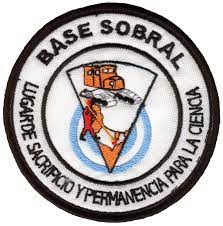 Sobral Base (WAP ARG-Ø3) was founded on April 2, 1965 by a crew of 5 men from the Belgrano I Base (WAP ARG-Ø5) who sent a message to Buenos Aires the following day urging them to speed up the departure of the polar expedition by the first days of October, given the ice instability. Thus, on October 26, 1965, a group of 10 men left the Belgrano I Base and a few days later arrived at Sobral Base, reaching the South Pole on December 10, 1965.
Sobral Base (WAP ARG-Ø3) was founded on April 2, 1965 by a crew of 5 men from the Belgrano I Base (WAP ARG-Ø5) who sent a message to Buenos Aires the following day urging them to speed up the departure of the polar expedition by the first days of October, given the ice instability. Thus, on October 26, 1965, a group of 10 men left the Belgrano I Base and a few days later arrived at Sobral Base, reaching the South Pole on December 10, 1965.
Sobral Base (420 km south of Belgrano base and 780 km north of the South Pole), could accommodate a maximum of 7 people. Because the ice from the barrier caused cracks in the structures, the Base was closed on October 28, 1968 after 3 years of continuous service, and was quickly buried under the ice of the Filchner barrier. In November 1983, a reconnaissance patrol on Ski-Doo motorcycles with tow sleds, made up of six men, set out for the first time from the Belgrano II Base (WAP ARG-Ø6) with the mission of establishing a new route between Belgrano II and Sobral Base. They managed to locate the objective and reactivate it after 15 years, carrying out maintenance, communications, meteorological measurements and topographic reconnaissance tasks up to the Diamante mountain range, in places not visited by man.  After 23 days of exploration, using nine days to go and four to return, they successfully returned to the Belgrano II leaving written testimonies in plastic tubes and marking the path with reeds and banners. After 14 years of this last reactivation, it was not possible to find it in 1997 when a patrol of 4 men from Belgrano II Base went in search of it. That patrol identified the place where the base should be located and established fuel depots for future operations in the region.
After 23 days of exploration, using nine days to go and four to return, they successfully returned to the Belgrano II leaving written testimonies in plastic tubes and marking the path with reeds and banners. After 14 years of this last reactivation, it was not possible to find it in 1997 when a patrol of 4 men from Belgrano II Base went in search of it. That patrol identified the place where the base should be located and established fuel depots for future operations in the region.
On December 13, 1999, a 7 man expedition that repeated the route to the South Pole arrived at the place indicated by the 1997 patrol, finding the remains of stakes and the Argentine flag, as well as fuel drums. The expedition searched for Sobral Base, finding it 11.5 km from its original position, finding the 3-meter-high antenna towers that protruded about 30 cm from the ice. The expedition members excavated the ice and managed to enter the base, staying there for two days.
 On 10 October 2000 a six-men research expedition established a scientific camp at Sobral’s emplacement and measured local ozone levels with a spectrophotometer. The temporary occupation was conducted by personnel belonging to Belgrano II and a technician from the National Antarctic Directorate; since then, a new expedition is sent every year between September and December, where the lowest annual average concentration of ozone in Antarctica is recorded.
On 10 October 2000 a six-men research expedition established a scientific camp at Sobral’s emplacement and measured local ozone levels with a spectrophotometer. The temporary occupation was conducted by personnel belonging to Belgrano II and a technician from the National Antarctic Directorate; since then, a new expedition is sent every year between September and December, where the lowest annual average concentration of ozone in Antarctica is recorded.
In order to reach the remote base this team must travel for distances up to 400 km (250 mi) over very rugged ice terrain filled with numerous cracks, which pose an often unpredictable threat. Snowcat heavy 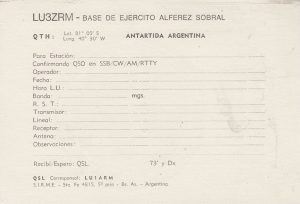 vehicles are used to cover half of the route; light vehicles like the Yamaha VK-540 II Ski-Doo are preferred for the rest. The party carries all the necessary equipment for a three-months stay, such as tents, fuel, supplies, survival kits, communication hardware and scientific instruments.
vehicles are used to cover half of the route; light vehicles like the Yamaha VK-540 II Ski-Doo are preferred for the rest. The party carries all the necessary equipment for a three-months stay, such as tents, fuel, supplies, survival kits, communication hardware and scientific instruments.
Sobral Base WAP ARG-Ø3, remains one of the most rare sites with very few Hamradio operations. 3 are the callsigns used from Base Sobral: LU1ZZ LU2ZZ and LU3ZRM.
.
TNX Olivier F6EPN (Spratley Woody) for the help in finding old QSL

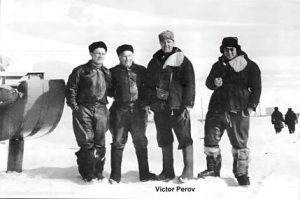 Viktor Perov piloted aircraft serving the Polar Stations SP-2, SP-3, SP-4 and SP-5. While working in the Arctic, Perov had to rescue people in distress more than once. In 1956, he participated in the rescue of the Norwegian-Swedish-Soviet expedition to Svalbard.
Viktor Perov piloted aircraft serving the Polar Stations SP-2, SP-3, SP-4 and SP-5. While working in the Arctic, Perov had to rescue people in distress more than once. In 1956, he participated in the rescue of the Norwegian-Swedish-Soviet expedition to Svalbard. The situation was complicated by the unexplored terrain, which the Belgians flew out to map. After several days of searching, on December 16, the Belgian polar explorers were found and rescued. For this feat, Viktor Perov was awarded the Order of Leopold II in 1959, and the Order of the Crown in 2001.
The situation was complicated by the unexplored terrain, which the Belgians flew out to map. After several days of searching, on December 16, the Belgian polar explorers were found and rescued. For this feat, Viktor Perov was awarded the Order of Leopold II in 1959, and the Order of the Crown in 2001. WAP wish the readers a Wonderful Easter time
WAP wish the readers a Wonderful Easter time
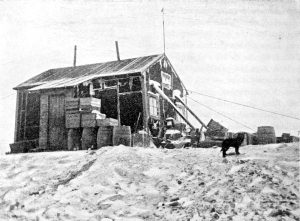 Nordenskjöld’s Hut aka Nordenskjöld House (
Nordenskjöld’s Hut aka Nordenskjöld House (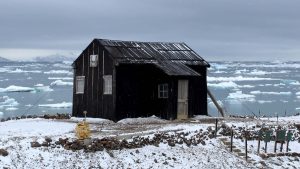 The Argentine Navy took possession of the Refuge on January 8, 1954, renaming it Refugio Suecia and proceeded to its restoration. On that day the frigate Captain Luis T. De Villalobos, commander of the transport ARA Bahia Aguirre, took possession of the Refuge facilities on behalf of the Government of the Argentine Republic and recorded the new name. On the same day in its vicinity the Betbeder Naval Shelter was built. The Hut was used as a base for reconnaissance research in the summers of 1953-1954 and 1954-1955. In the early 1960s it had a warehouse with provisions for three people for three months.
The Argentine Navy took possession of the Refuge on January 8, 1954, renaming it Refugio Suecia and proceeded to its restoration. On that day the frigate Captain Luis T. De Villalobos, commander of the transport ARA Bahia Aguirre, took possession of the Refuge facilities on behalf of the Government of the Argentine Republic and recorded the new name. On the same day in its vicinity the Betbeder Naval Shelter was built. The Hut was used as a base for reconnaissance research in the summers of 1953-1954 and 1954-1955. In the early 1960s it had a warehouse with provisions for three people for three months. 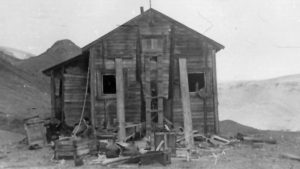 The leader of the expedition had to spend the winter on the island along with meteorologist Gösta Bodman, sailor Gustav Akerlund, all of them of Swedish nationality, and Argentine Josè Maria Sobral, ensign. They would carry out meteorological, magnetic, astronomical and hydrographic work, as well as expeditions on the sea ice to the neighboring islands and to the nearby area of the Antarctic Peninsula, a region later known as the Nordenskjold Coast, and which extends to the southwest of the island.
The leader of the expedition had to spend the winter on the island along with meteorologist Gösta Bodman, sailor Gustav Akerlund, all of them of Swedish nationality, and Argentine Josè Maria Sobral, ensign. They would carry out meteorological, magnetic, astronomical and hydrographic work, as well as expeditions on the sea ice to the neighboring islands and to the nearby area of the Antarctic Peninsula, a region later known as the Nordenskjold Coast, and which extends to the southwest of the island.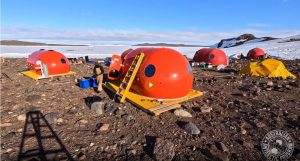 A new deep-Field Camp has been established in the Bunger Hills, near the Denman Glacier in East Antarctica, for scientists to begin studying climate change impacts in the region.
A new deep-Field Camp has been established in the Bunger Hills, near the Denman Glacier in East Antarctica, for scientists to begin studying climate change impacts in the region.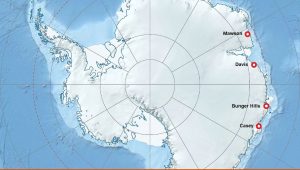
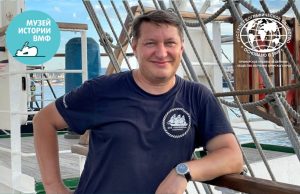 Valery Sushkov RW3GW is an Old Timer DXpeditionner and actual President of the Russian Robinson Club (
Valery Sushkov RW3GW is an Old Timer DXpeditionner and actual President of the Russian Robinson Club ( Society, Society for the Study of the Amur Territory, member of the Union of Journalists of Russia, laureate of the National Prizes of the Russian Geographical Society “Crystal Compass”
Society, Society for the Study of the Amur Territory, member of the Union of Journalists of Russia, laureate of the National Prizes of the Russian Geographical Society “Crystal Compass” During the last Antarctic Summer Campaign, a staff from the Argentine Joint Antarctic Command set a shelter for scientific personnel on Vega Island and called it Refugio Teniente Primero Aroldo Serrano. This is a brand new entry on
During the last Antarctic Summer Campaign, a staff from the Argentine Joint Antarctic Command set a shelter for scientific personnel on Vega Island and called it Refugio Teniente Primero Aroldo Serrano. This is a brand new entry on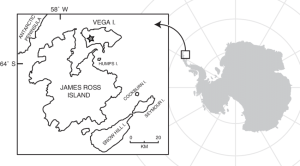 Peninsula by Prince Gustav Channel. The island was named by Otto Nordenskjold, leader of the Swedish Antarctic Expedition (1901–04) in honour of the ship making the first voyage through the Northeast Passage, 1878-79.
Peninsula by Prince Gustav Channel. The island was named by Otto Nordenskjold, leader of the Swedish Antarctic Expedition (1901–04) in honour of the ship making the first voyage through the Northeast Passage, 1878-79.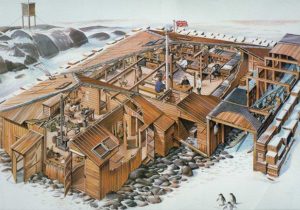 The Replica Museum is a boutique, world class museum providing visitors with the opportunity to learn and understand the history and achievements of the men of the 1911-14 Australasian Antarctic Expedition led by Douglas Mawson.
The Replica Museum is a boutique, world class museum providing visitors with the opportunity to learn and understand the history and achievements of the men of the 1911-14 Australasian Antarctic Expedition led by Douglas Mawson. Antarctic Ambassadors is a global community of people who love and respect the region, educate others by sharing their Antarctic experiences, advocate for Antarctica when opportunities arise and protect Antarctica by making positive changes at home.
Antarctic Ambassadors is a global community of people who love and respect the region, educate others by sharing their Antarctic experiences, advocate for Antarctica when opportunities arise and protect Antarctica by making positive changes at home.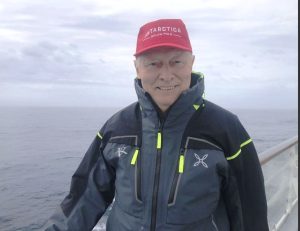
 Project Blizzard aimed to increase public awareness of Australia’s involvement in Antarctica and, in doing so, conserve Mawson’s Huts. In particular, viewed the scientific work, including meteorological, biological, geological and magnetic research of the AAE, as significant. The organization immediately began to look for financial support from the community, hoping to raise capital for a privately-funded Antarctic expedition. The campaign used the slogan ‘Buy a board for Mawson’s Hut’.
Project Blizzard aimed to increase public awareness of Australia’s involvement in Antarctica and, in doing so, conserve Mawson’s Huts. In particular, viewed the scientific work, including meteorological, biological, geological and magnetic research of the AAE, as significant. The organization immediately began to look for financial support from the community, hoping to raise capital for a privately-funded Antarctic expedition. The campaign used the slogan ‘Buy a board for Mawson’s Hut’. In 1985/86, they focused on stabilising the internal platform of the Main Hut, which had partly collapsed under the load of snow ingress, using metal and timber props. This work involved an associated archaeological excavation program in areas disturbed for the works.
In 1985/86, they focused on stabilising the internal platform of the Main Hut, which had partly collapsed under the load of snow ingress, using metal and timber props. This work involved an associated archaeological excavation program in areas disturbed for the works.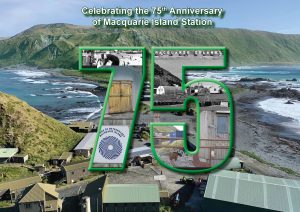 In the early hours of the morning of 7th March 1948, HMALST 3501 (later renamed HMAS Labuan) anchors at Buckles Bay, Macquarie Island 54° 29′ 56″ South, 158° 56′ 17″ East.
In the early hours of the morning of 7th March 1948, HMALST 3501 (later renamed HMAS Labuan) anchors at Buckles Bay, Macquarie Island 54° 29′ 56″ South, 158° 56′ 17″ East.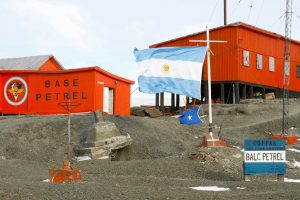 Renovation work continues on the infrastructure of the Petrel Joint Antarctic Base (
Renovation work continues on the infrastructure of the Petrel Joint Antarctic Base (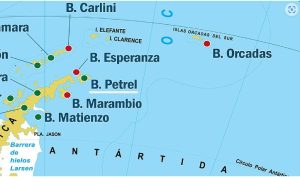 The complete repair of the road to the Main Power Plant, the demolition of the old power plant and the bases of disused communication towers, are part of this second phase of development together with the renovation of the landing strips and the disposal of waste. antarctics
The complete repair of the road to the Main Power Plant, the demolition of the old power plant and the bases of disused communication towers, are part of this second phase of development together with the renovation of the landing strips and the disposal of waste. antarctics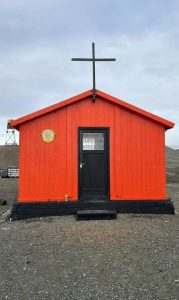 Also, Petrel Base has already inaugurated its new small
Also, Petrel Base has already inaugurated its new small  Now the operators are almost leaving the Icy Continent; some are already back home, others are approaching the return, others are still on site for another 20-25 days, as for example the Czeck Team actually at Johan Georg Mendel Station (WAP CZE-NEW) or the Argentineans at Petrel Base (WAP ARG-17) as well as the Overwintering Teams at the several Bases who areapproaching the loong South Polar night. Our thanks go to the Argentinean operators at Esperanza LU1ZV and Belgrano II LU1ZG, the Russian RI1ANC from Vostok RI1ANU at Bellingshausen, who are still on, to continue to be on air or VU2CUW at Maitri waiting to be on air!.
Now the operators are almost leaving the Icy Continent; some are already back home, others are approaching the return, others are still on site for another 20-25 days, as for example the Czeck Team actually at Johan Georg Mendel Station (WAP CZE-NEW) or the Argentineans at Petrel Base (WAP ARG-17) as well as the Overwintering Teams at the several Bases who areapproaching the loong South Polar night. Our thanks go to the Argentinean operators at Esperanza LU1ZV and Belgrano II LU1ZG, the Russian RI1ANC from Vostok RI1ANU at Bellingshausen, who are still on, to continue to be on air or VU2CUW at Maitri waiting to be on air!.
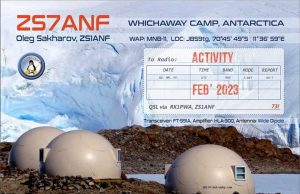 together with Oleg Sakharov ZS7ANF that, in addtion to the WFR, he did operate from Whichaway Camp
together with Oleg Sakharov ZS7ANF that, in addtion to the WFR, he did operate from Whichaway Camp  Thanks to Oleg UA6GG-DX Trophy who sent us a picture (here on the side) showing some very well known brigade of Antarcticians friends who haven’t seen each other for a very long time, joining a festive meeting at Cape Town, South Africa after the tiring experience in Antarctica. (L-R Oleg Sakharov
Thanks to Oleg UA6GG-DX Trophy who sent us a picture (here on the side) showing some very well known brigade of Antarcticians friends who haven’t seen each other for a very long time, joining a festive meeting at Cape Town, South Africa after the tiring experience in Antarctica. (L-R Oleg Sakharov 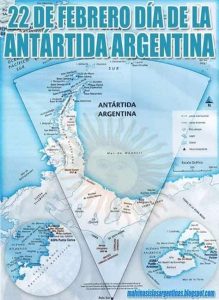 On February 22, 1904, the Meteorological Observatory on Laurie Island, South Orkneys which would later become the Orcadas Base (
On February 22, 1904, the Meteorological Observatory on Laurie Island, South Orkneys which would later become the Orcadas Base (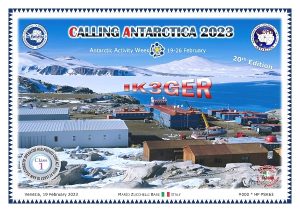 To commemorate the date of that inauguration, the 22nd February of each year Argentina celebrates its Antarctica Day, which falls exactly onto the WAP Antarctic Activity Week (
To commemorate the date of that inauguration, the 22nd February of each year Argentina celebrates its Antarctica Day, which falls exactly onto the WAP Antarctic Activity Week (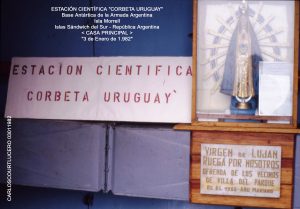 Carlos, reports to have been to the Scientific Station of Corbeta Uruguay (Estación Científica Corbeta Uruguay), among the IV Dotation Winter 1981.
Carlos, reports to have been to the Scientific Station of Corbeta Uruguay (Estación Científica Corbeta Uruguay), among the IV Dotation Winter 1981.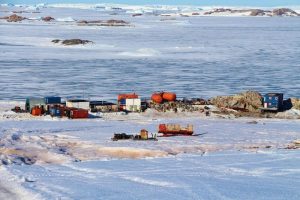 Robert Guillard Base is a French-Italian station managed by the French Polar Institute Paul-Emile Victor (
Robert Guillard Base is a French-Italian station managed by the French Polar Institute Paul-Emile Victor (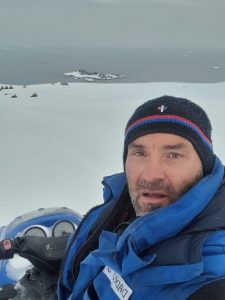 Robert Guillard Station is the point of departure of the traverses to Concordia Station (
Robert Guillard Station is the point of departure of the traverses to Concordia Station (
 On February 17, 18 and 19, 2023, within the framework of the XV edition of the “South American Lighthouses Weekend”, a “Light Houses” which were never activated before, very close to the Esperanza Base, will be on air : the Baliza Rocas denticuladas Posterior Esperanza (aka Baliza Enfilación Posterior Esperanza) ANC-007, at
On February 17, 18 and 19, 2023, within the framework of the XV edition of the “South American Lighthouses Weekend”, a “Light Houses” which were never activated before, very close to the Esperanza Base, will be on air : the Baliza Rocas denticuladas Posterior Esperanza (aka Baliza Enfilación Posterior Esperanza) ANC-007, at  the LRA36 station, which is in a modernization stage, with the equipment that Alejandro brought to Antarctica, an Icom 7000 with an Expert 1300w Linear Amplifier and a notebook, using the rhombic antenna from the Radio Nacional and it is probable that he will also assemble a G5RV.
the LRA36 station, which is in a modernization stage, with the equipment that Alejandro brought to Antarctica, an Icom 7000 with an Expert 1300w Linear Amplifier and a notebook, using the rhombic antenna from the Radio Nacional and it is probable that he will also assemble a G5RV.  Located at 54°27’South, 03° 28’ East, Cape Fie (or Kapp Fie) is a cape marking the Sutheast extremity of Bouvetøya Island, Peri Antarctic It was first roughly charted in 1898 by a German expedition under Carl Chun, and was re-charted and named by the Norwegian expedition under Captain Haral Horntvedt who explored the area from the Norvegia in December 1927
Located at 54°27’South, 03° 28’ East, Cape Fie (or Kapp Fie) is a cape marking the Sutheast extremity of Bouvetøya Island, Peri Antarctic It was first roughly charted in 1898 by a German expedition under Carl Chun, and was re-charted and named by the Norwegian expedition under Captain Haral Horntvedt who explored the area from the Norvegia in December 1927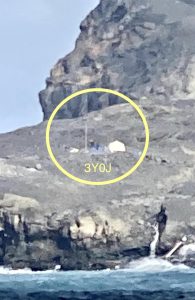 On 6 febr.2023, 3YØJ began his Ham radio activity from there. It has not been an easy task but the Team was finally able to set the Camp on a top flat area at Cape Fie.
On 6 febr.2023, 3YØJ began his Ham radio activity from there. It has not been an easy task but the Team was finally able to set the Camp on a top flat area at Cape Fie.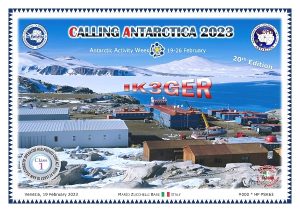 As in the past years, Paolo, IK3GER
As in the past years, Paolo, IK3GER 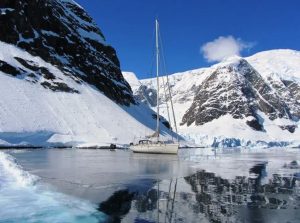 S/Y Marama is a custom sailing yacht launched in 2009 by N2A, in France. Designed to give its crew maximum safety regardless of sea and wind conditions, this extraordinary Yacht seems to be the best choice to sail the Antarctic waters. Everything is oversized on board, from hull sampling to mast and rigging sections, an extremely robust expedition sailboat capable of any type of navigation.
S/Y Marama is a custom sailing yacht launched in 2009 by N2A, in France. Designed to give its crew maximum safety regardless of sea and wind conditions, this extraordinary Yacht seems to be the best choice to sail the Antarctic waters. Everything is oversized on board, from hull sampling to mast and rigging sections, an extremely robust expedition sailboat capable of any type of navigation.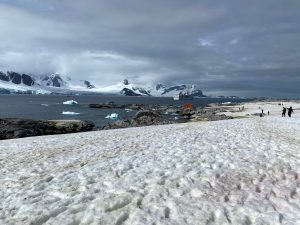 Volker Strecke DL8JDX is touring around Antarctica on board of a cruise Ship. Yesterday Volker sends
Volker Strecke DL8JDX is touring around Antarctica on board of a cruise Ship. Yesterday Volker sends 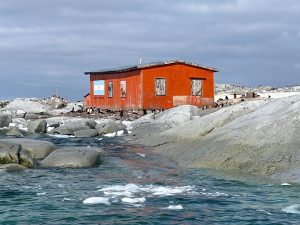 Close to this Argentine naval refuge ( an old corrugated iron shack in rusted colors), lays a simple cross monument, an unreadable metal plaque with just one word “John” recalls the dead of a man of the British Antarctic Survey, who tried to get here over the sea ice in 1982..
Close to this Argentine naval refuge ( an old corrugated iron shack in rusted colors), lays a simple cross monument, an unreadable metal plaque with just one word “John” recalls the dead of a man of the British Antarctic Survey, who tried to get here over the sea ice in 1982.. Cape Adare is a prominent cape of black basalt forming the northern tip of the Adare Peninsula and the north-easternmost extremity of Victoria Land, East Antarctica and an important landing site and Base Camp during early Antarctic Exploration.
Cape Adare is a prominent cape of black basalt forming the northern tip of the Adare Peninsula and the north-easternmost extremity of Victoria Land, East Antarctica and an important landing site and Base Camp during early Antarctic Exploration.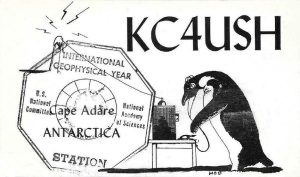 Cape Hallett, located 63 miles (101 km) to the South of Cape Adare, is a snow-free area on the northern tip of the Hallett Pensula on the Ross Sea coast of Victoria Land, East Antarctica. he cape was the location of a joint scientific base, Hallett Station, (WAP MNB-08) between the United States and New Zealand during the International Geophisical Year of 1957, and was manned permanently until 1964, when there was a major fire. It was then used as a summer only base until 1973.
Cape Hallett, located 63 miles (101 km) to the South of Cape Adare, is a snow-free area on the northern tip of the Hallett Pensula on the Ross Sea coast of Victoria Land, East Antarctica. he cape was the location of a joint scientific base, Hallett Station, (WAP MNB-08) between the United States and New Zealand during the International Geophisical Year of 1957, and was manned permanently until 1964, when there was a major fire. It was then used as a summer only base until 1973.  The callsign of Hallett Base (
The callsign of Hallett Base (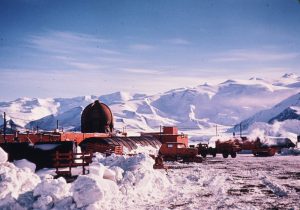 dome that was reportedly used for plant growth as early as 1958 (Image credit: John Cranfield ©Antarctica New Zealand Pictorial Collection [ANZSC0163.2][1961-1962]).
dome that was reportedly used for plant growth as early as 1958 (Image credit: John Cranfield ©Antarctica New Zealand Pictorial Collection [ANZSC0163.2][1961-1962]).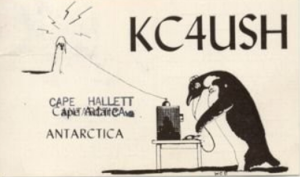
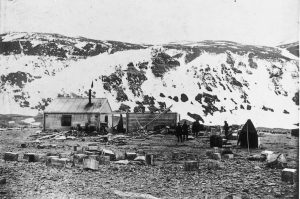 Members of the Northern Party of Scott’s Terra Nova Expedition over-wintered at Cape Adare in 1911 and 1912. They also erected one hut, which has fallen into ruin today. The remains of two Borchgrevink’s Hut, as well as those of the Terra Nova Expedition’s hut, have also been designated a Histpric Site or Monument (
Members of the Northern Party of Scott’s Terra Nova Expedition over-wintered at Cape Adare in 1911 and 1912. They also erected one hut, which has fallen into ruin today. The remains of two Borchgrevink’s Hut, as well as those of the Terra Nova Expedition’s hut, have also been designated a Histpric Site or Monument ( After a 19 hours flight, Volker did land at Ushuaia (
After a 19 hours flight, Volker did land at Ushuaia ( Actually, Volker is embarked on a cruise ship as a lecturer and Tour Guide (no possibility for Radio… ) at an Antarctica expedition. The trip is including Argentina, Chile, South Shetland Islands and Antarctic Peninsula and will last till Feb. 18th, 2023.
Actually, Volker is embarked on a cruise ship as a lecturer and Tour Guide (no possibility for Radio… ) at an Antarctica expedition. The trip is including Argentina, Chile, South Shetland Islands and Antarctic Peninsula and will last till Feb. 18th, 2023.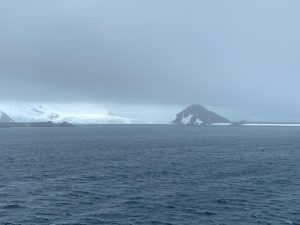 Yesterday, jan 21st, the Polar ship passed near Half Moon Island where the Argentine Summer Station Teniente Camara (
Yesterday, jan 21st, the Polar ship passed near Half Moon Island where the Argentine Summer Station Teniente Camara ( Nearly 15 years ago, a major restoration project had been taking place at the old abandoned whaling station at Port Jeanne d’Arc. This had been built late in the 19th century by a Norwegian company and abandoned early last century when factory ships made land-based whaling uneconomic. For years the weather and vandalism had been destroying the station, until Jean-François Le Mouël convinced the administration of TAAF that it should be preserved.
Nearly 15 years ago, a major restoration project had been taking place at the old abandoned whaling station at Port Jeanne d’Arc. This had been built late in the 19th century by a Norwegian company and abandoned early last century when factory ships made land-based whaling uneconomic. For years the weather and vandalism had been destroying the station, until Jean-François Le Mouël convinced the administration of TAAF that it should be preserved.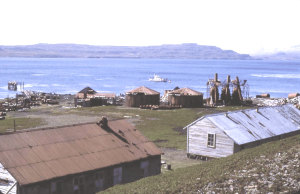 The Kerguelen Islands are located at 49°15′South, 69°35′East. The main island, Grande Terre, originally called Desolation Island, is 6,675 km² and it is surrounded by another 300 smaller islands and islets, forming an archipelago of 7,215 km².
The Kerguelen Islands are located at 49°15′South, 69°35′East. The main island, Grande Terre, originally called Desolation Island, is 6,675 km² and it is surrounded by another 300 smaller islands and islets, forming an archipelago of 7,215 km².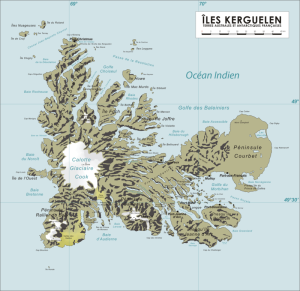 Île du Port, also in the north in the Golfe des Baleiniers at 49°11’South, 69°36’ East, is the third largest satellite island with an area of 43 km² (16.6 mi²); near its center it reaches an altitude of 340 m (1,115 ft.).
Île du Port, also in the north in the Golfe des Baleiniers at 49°11’South, 69°36’ East, is the third largest satellite island with an area of 43 km² (16.6 mi²); near its center it reaches an altitude of 340 m (1,115 ft.).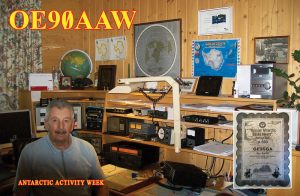 Another 3 entries on the
Another 3 entries on the 
 After six days of activities on the White Continent, a new version of the Antarctic School Expedition (EAE) organized by the Chilean Antarctic Institute (
After six days of activities on the White Continent, a new version of the Antarctic School Expedition (EAE) organized by the Chilean Antarctic Institute ( ARA Libertad is a tall ship which serves as a school ship in the Argentine Navy. She was built in the 1950s at the Rio Santiago shipyards near Buenos Aires, Argentina. Her maiden voyage was in 1962, and she continues to be a school ship with yearly instruction voyages for the graduating naval cadets.
ARA Libertad is a tall ship which serves as a school ship in the Argentine Navy. She was built in the 1950s at the Rio Santiago shipyards near Buenos Aires, Argentina. Her maiden voyage was in 1962, and she continues to be a school ship with yearly instruction voyages for the graduating naval cadets.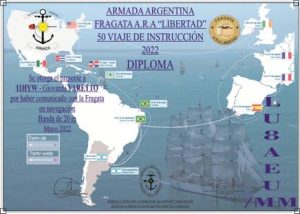
 Master roofer Dimitris Georgiadis (picture aside) will leave for Antarctica in mid-January and will be there until March. He will travel to the icy continent with scientists from Masaryk University in Brno, who are investigating climate change in Antarctica and solving dozens of research projects, including the effect of harsh polar conditions on the human organism.
Master roofer Dimitris Georgiadis (picture aside) will leave for Antarctica in mid-January and will be there until March. He will travel to the icy continent with scientists from Masaryk University in Brno, who are investigating climate change in Antarctica and solving dozens of research projects, including the effect of harsh polar conditions on the human organism.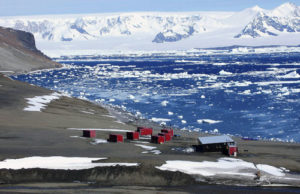
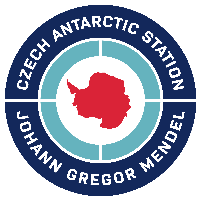 Pavel Kapler, manager of the Czech Antarctic Research Program, can find anything for polar explorers, from new technical equipment for the station to quality thermal underwear, but getting a roofer to Antarctica was a chore. In the mean while, ther’s some possibility that Ham Radio operation could also be performer from the unnumbered Mendel Station…never say never!
Pavel Kapler, manager of the Czech Antarctic Research Program, can find anything for polar explorers, from new technical equipment for the station to quality thermal underwear, but getting a roofer to Antarctica was a chore. In the mean while, ther’s some possibility that Ham Radio operation could also be performer from the unnumbered Mendel Station…never say never! 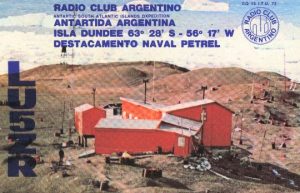 Petrel Base (
Petrel Base ( As of November 2022 Petrel became once again a permanent Base. A team of 18 is still there to carry out the necessary works to restore the infrastructure throughout the year. Another goal is to build a 1800 meters main runway and a secondary 1300 meters secondary runway where the Hercules C130 or smaller aircraft can operate. In addition personnel will carry on hydrographic studies to determine the most suitable location for the construction of a dock that will allow operations with shipload.
As of November 2022 Petrel became once again a permanent Base. A team of 18 is still there to carry out the necessary works to restore the infrastructure throughout the year. Another goal is to build a 1800 meters main runway and a secondary 1300 meters secondary runway where the Hercules C130 or smaller aircraft can operate. In addition personnel will carry on hydrographic studies to determine the most suitable location for the construction of a dock that will allow operations with shipload.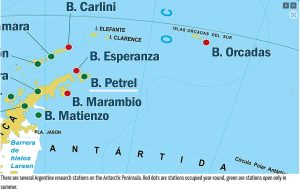 cover not only all functional requirements, but also housing requirements in accordance with modern construction techniques.
cover not only all functional requirements, but also housing requirements in accordance with modern construction techniques.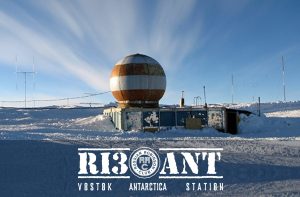 To celebrate the 30th Anniversary of Russian Robinson Club (RRC) a Special callsign RI3ØANT will operate from Vostok Base (
To celebrate the 30th Anniversary of Russian Robinson Club (RRC) a Special callsign RI3ØANT will operate from Vostok Base (
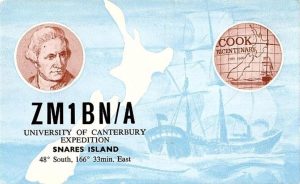 New Zealand Sub-Antarctic Islands consist of five island groups: Snares, Bounty Islands, Antipodes Islands, Auckland Islands and Campbell Island, in the Southern Ocean south-east of New Zealand. The islands, lying between the Antarctic and Subtropical Convergences and the seas, have a high level of productivity, biodiversity, wildlife population densities and endemism among birds, plants and invertebrates.
New Zealand Sub-Antarctic Islands consist of five island groups: Snares, Bounty Islands, Antipodes Islands, Auckland Islands and Campbell Island, in the Southern Ocean south-east of New Zealand. The islands, lying between the Antarctic and Subtropical Convergences and the seas, have a high level of productivity, biodiversity, wildlife population densities and endemism among birds, plants and invertebrates.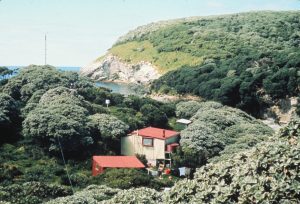
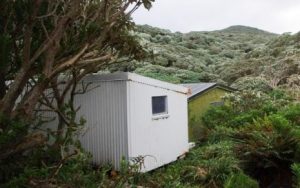
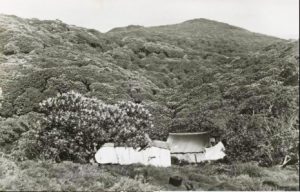

 Cape Hallett 72°19’ South, 170°16’ East, was the location of a joint scientific base, Hallett Station, between the United States and New Zealand during the International Geophysical Year of 1957, and was manned permanently until 1964, when there was a major fire.
Cape Hallett 72°19’ South, 170°16’ East, was the location of a joint scientific base, Hallett Station, between the United States and New Zealand during the International Geophysical Year of 1957, and was manned permanently until 1964, when there was a major fire. At the time, thirty Navy men and scientists were stationed at a “rookery” near Hallett Station from October through February to study the over 100,000 Adelie penguins which populate the area. These birds, 18 inches tall and weighing 14 pounds, return annually to breed and raise their young. An area of 74 ha, is protected under the Antarctic Treaty System as Antarctic Specially Protected Area (ASPA) No.106 because it contains habitats with a rich and diverse range of plant communities that are the most extensive and representative examples known at the northern end of the latitudinal gradient of Victoria Land and the Ross Sea.
At the time, thirty Navy men and scientists were stationed at a “rookery” near Hallett Station from October through February to study the over 100,000 Adelie penguins which populate the area. These birds, 18 inches tall and weighing 14 pounds, return annually to breed and raise their young. An area of 74 ha, is protected under the Antarctic Treaty System as Antarctic Specially Protected Area (ASPA) No.106 because it contains habitats with a rich and diverse range of plant communities that are the most extensive and representative examples known at the northern end of the latitudinal gradient of Victoria Land and the Ross Sea. The only activity known from Hallett Station (
The only activity known from Hallett Station (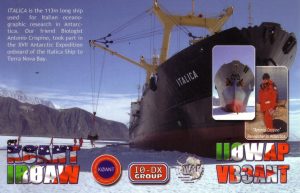 Jim, KBØMZFwrote:
Jim, KBØMZFwrote:
 WAP Antarctic bulletin nr. 204 is available online.
WAP Antarctic bulletin nr. 204 is available online. The 20th edition of the WW Antarctic Activity Week will be on air from 19th through 26th February 2023.
The 20th edition of the WW Antarctic Activity Week will be on air from 19th through 26th February 2023.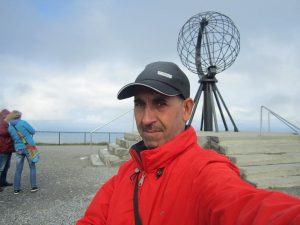 Kamel (picture on theright) wrote: We did participate last year to the 19th AAW with the same call, and it was a good and beneficial experience for all of us, and we hope that this year will be better .
Kamel (picture on theright) wrote: We did participate last year to the 19th AAW with the same call, and it was a good and beneficial experience for all of us, and we hope that this year will be better . After many years, KC4AAC from Palmer Station (
After many years, KC4AAC from Palmer Station (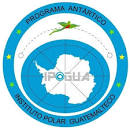 Since July 1991, Guatemala is part of the signatory countries of the Antarctic Treaty with non-consultative status. IPOGUA (
Since July 1991, Guatemala is part of the signatory countries of the Antarctic Treaty with non-consultative status. IPOGUA ( The main mission of IPOGUA is to lead and maintain the presence of Guatemala in Antarctica , through civil-military participation in scientific and technological research activities that promote the advancement of Guatemalan polar science.
The main mission of IPOGUA is to lead and maintain the presence of Guatemala in Antarctica , through civil-military participation in scientific and technological research activities that promote the advancement of Guatemalan polar science. First
First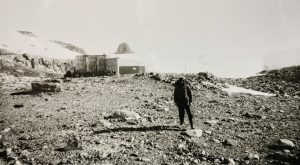 Dr. Volker Strecke DL8JDX (Antarctic veteran) sent
Dr. Volker Strecke DL8JDX (Antarctic veteran) sent 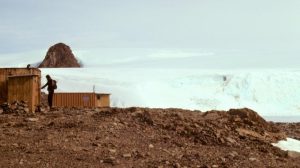 This at the rigth, is how it looked in 1991:
This at the rigth, is how it looked in 1991: Picture on the left, shows the same site how it looks today.
Picture on the left, shows the same site how it looks today. The Australian Antarctic Division (
The Australian Antarctic Division (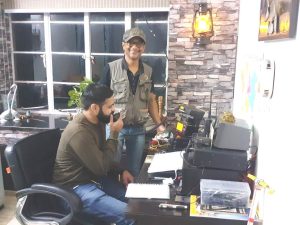
 Sunny thanks VU2MUE Sandeep Baruah from Vigyan Prasar for the 2 rigs to be used in Antarctica and VU3BPZ, Antarctic veteran and good friend that has always been a guidance for his Antarctica journey
Sunny thanks VU2MUE Sandeep Baruah from Vigyan Prasar for the 2 rigs to be used in Antarctica and VU3BPZ, Antarctic veteran and good friend that has always been a guidance for his Antarctica journey The Hut is around 25 square meters and is located about 3,2 kilometers from Troll Station (72°00’S, 2°32’E). The use of this small recreational Hut at Vassdalen about 40 min from Troll, was approved by the Norwegian Ministry of Climate and Environment. It is heated by a kerosene (Jet A-1) stove. The transport is mainly carried out with snow mobiles on a well-known route for the visitors and calculated to 50 days a year with 2 guests on each visit.
The Hut is around 25 square meters and is located about 3,2 kilometers from Troll Station (72°00’S, 2°32’E). The use of this small recreational Hut at Vassdalen about 40 min from Troll, was approved by the Norwegian Ministry of Climate and Environment. It is heated by a kerosene (Jet A-1) stove. The transport is mainly carried out with snow mobiles on a well-known route for the visitors and calculated to 50 days a year with 2 guests on each visit.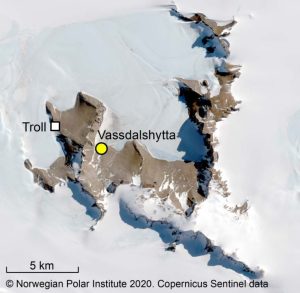 Skiing, hiking in the mountains, running and shorter trips with snowmobiles and Band wagons are typical activities for the personnel at Troll Station. According to the information, Vassdalsbua Hut is in use since 2018. After a visit the garbage is transported back to environmental station at Troll. Sometimes, researchers spend severl days at Vassdalsbua field Hut, collecting variety of soil and water samples for study
Skiing, hiking in the mountains, running and shorter trips with snowmobiles and Band wagons are typical activities for the personnel at Troll Station. According to the information, Vassdalsbua Hut is in use since 2018. After a visit the garbage is transported back to environmental station at Troll. Sometimes, researchers spend severl days at Vassdalsbua field Hut, collecting variety of soil and water samples for study
 After the joint venture with the Hams of Russian Robinson Club (RRC) in the celebrations of the 200th anniversary of the discovery of Antarctica, WAP proposes a new friendship adventure, undertaking jointly in honor of the Italian Air Force (
After the joint venture with the Hams of Russian Robinson Club (RRC) in the celebrations of the 200th anniversary of the discovery of Antarctica, WAP proposes a new friendship adventure, undertaking jointly in honor of the Italian Air Force ( Additional purpose, is to share what Nations and Organizations are doing to protect this still non contaminated corner of the world, to share WW a message of peace .
Additional purpose, is to share what Nations and Organizations are doing to protect this still non contaminated corner of the world, to share WW a message of peace . The conference held on last November 11, is an instance of integration and exchange between researchers who have developed or are currently developing Antarctic Science activities. The idea is to share the progress, difficulties and eventual solutions that have arisen in the course of the projects. The purpose of the meeting, is yo allow generating and consolidating research collaborations, as well as evaluating the work completed with a perspective view of activities to eventually continue.
The conference held on last November 11, is an instance of integration and exchange between researchers who have developed or are currently developing Antarctic Science activities. The idea is to share the progress, difficulties and eventual solutions that have arisen in the course of the projects. The purpose of the meeting, is yo allow generating and consolidating research collaborations, as well as evaluating the work completed with a perspective view of activities to eventually continue.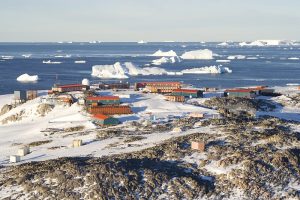 Scientists and technical staff at the French Base Dumont d’Urville,
Scientists and technical staff at the French Base Dumont d’Urville, 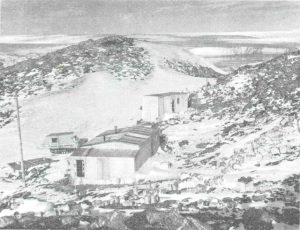 Thanks to Olivier F6EPN, we have rebuilt the history of Marret Base which, so far, has been forgotten by our careful searches of old and new Antarctic Bases and settlements.
Thanks to Olivier F6EPN, we have rebuilt the history of Marret Base which, so far, has been forgotten by our careful searches of old and new Antarctic Bases and settlements.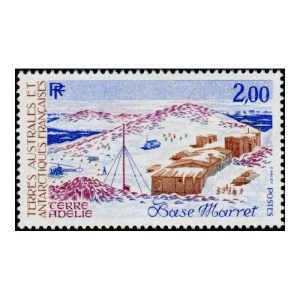
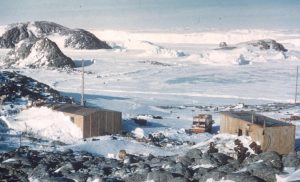 Today, the Marret building on Petrel Island, restored by the 36th French Mission, is always present and many are wintering them which made there some scrapers, evenings melted pancakes and others, on the traces of Prevost, Marret and the others…
Today, the Marret building on Petrel Island, restored by the 36th French Mission, is always present and many are wintering them which made there some scrapers, evenings melted pancakes and others, on the traces of Prevost, Marret and the others…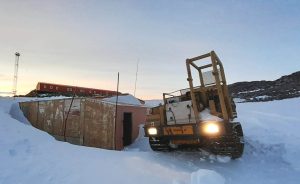 Base Marret (aka Cabane Marret), new issued
Base Marret (aka Cabane Marret), new issued  So, Marret 66°40’12” South, 140°1’ 0” East was already classified as Base before of DDU (66°39’46” South, 140°00’05” East) which was built and opened on January 12, 1956.
So, Marret 66°40’12” South, 140°1’ 0” East was already classified as Base before of DDU (66°39’46” South, 140°00’05” East) which was built and opened on January 12, 1956.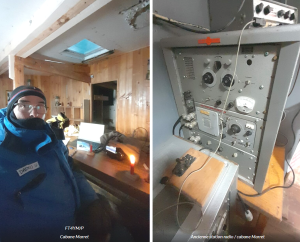 confirm that FT4YM/P operating from a building of Marret Base be eligible as WAP FRA-11.
confirm that FT4YM/P operating from a building of Marret Base be eligible as WAP FRA-11.